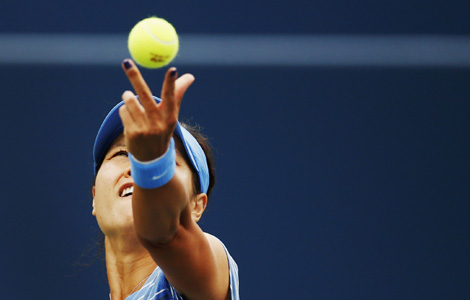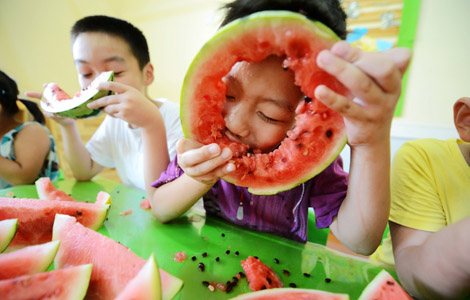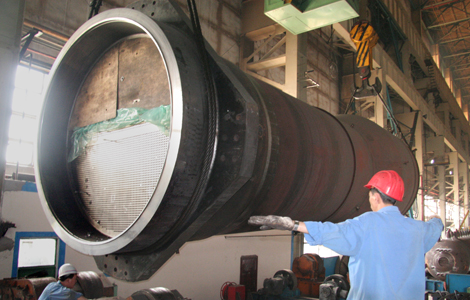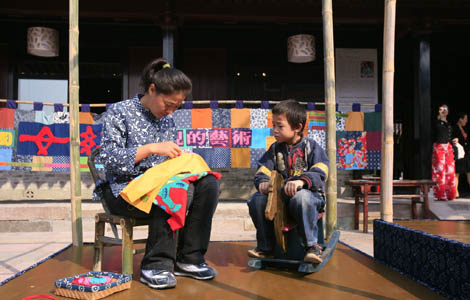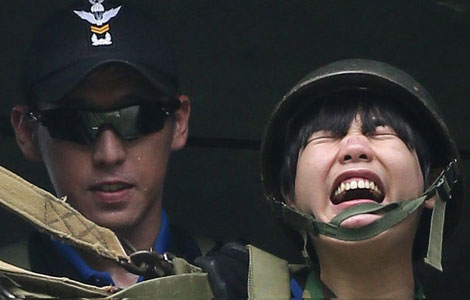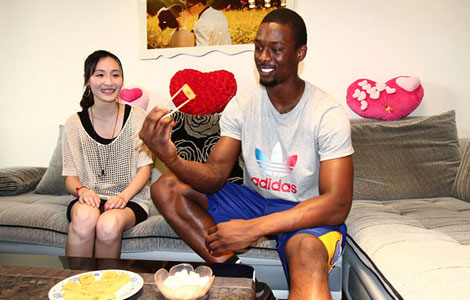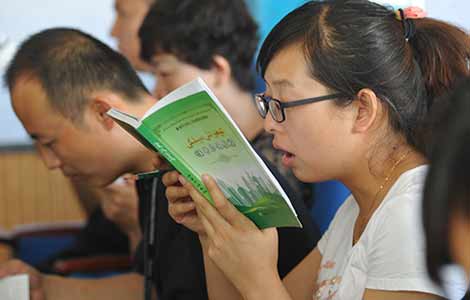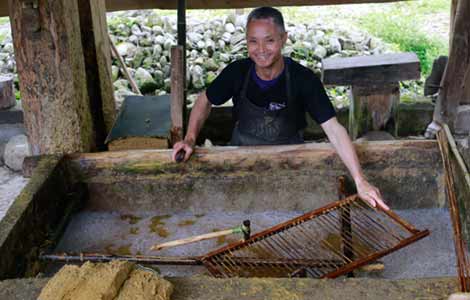Sports body lowers fitness standards for students
Updated: 2013-08-08 08:10
By Sun Xiaochen (China Daily)
|
||||||||
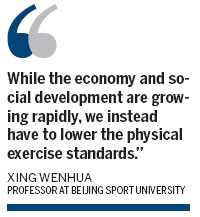
China's sports authority has lowered the required standards for physical performance among students, citing a decline in the general level of fitness among children, but it hopes that better sports education in schools can make a difference.
The State General Administration of Sports announced on Wednesday its revision of national physical exercise standards, saying that standards had been lowered in some areas, particularly for children.
Experts said the body was forced to make the difficult decision to adapt to changing realities.
"Chinese students' fitness levels have been dropping since 1995. It slowed down a bit in recent years, but it did not improve. In fact, it still continues to deteriorate, and this worries us," said Xing Wenhua, a professor at Beijing Sport University.
"While the economy and social development are growing rapidly, we instead have to lower the physical exercise standards. This is so embarrassing," said Xing, who has been researching youth physical education since 1985.
According to the new standards, assessment criteria for school physical education events including the 50-meter sprint, standing long jump and 800-1,000-meter run have been downgraded compared with the last edition in 2003. Meanwhile, some very demanding events like the parallel bars have been canceled altogether.
But Xing said the standards were still higher than the average fitness levels of young people, meaning they will motivate children to do more sports, so long as physical education is properly conducted by schools.
"Implementation will be another issue, as some schools can't guarantee physical education activities due to the academic pressure and risks of sports injury," Xing said.
The emphasis on academic excellence, coupled with the rigors of the gaokao - the national college entrance exam - has forced many schools to replace sports classes with examinations, canceling extracurricular sports activities around major exams.
Drops in fitness levels have been highlighted by several deaths during physical training events in schools, such as runs over longer distances.
Liu Guoyong, an official from sports administration, said the authority will work closely with the Ministry of Education to reinforce in-school sports programs to eventually help children meet the national standards.
Liu Peijun, deputy director of the ministry's department for sports, health and art, said the ministry will work on policies to include the implementation of school sports activities in the evaluation of school headmasters.
"So it could urge school leaders to conduct physical education better," he said.
However, some school principals said the real focus of attention should be remote and underprivileged areas, rather than major cities.
"Schools in big cities like Beijing and Shanghai have been doing quite well at guaranteeing enough exercise on-site as the 'health-first' awareness has been generally raised here," said Wang Tao, vice-president of Beijing 101 Middle School, which has various after-class sports clubs for students.
"The real problem, I think, is to raise the awareness in smaller cities where exam results remain the only target of education."
The new national fitness standards were based on data from 22,741 people from five provinces and municipalities, and will apply to those aged 6 to 69.
sunxiaochen@chinadaily.com.cn
(China Daily USA 08/08/2013 page4)
Most Viewed
Editor's Picks

|

|

|

|

|

|
Today's Top News
China's innovation prowess looms large
US, EU concerned about stalemate in Egypt
EU to continue anti-subsidy solar probe
Nation poised to import more GMO products
Illegal Shanghai stay costs foreigner 10,000 yuan
China to be leading business travel market
Cards make paying global tuition easier
Probes not targeting foreign brands
US Weekly

|

|
